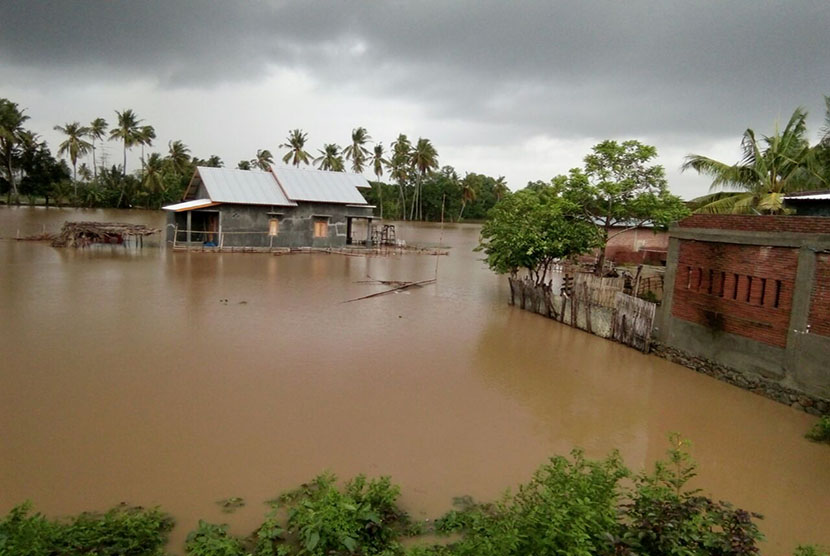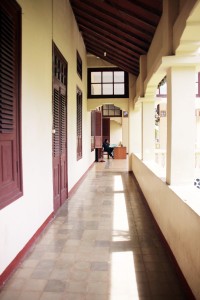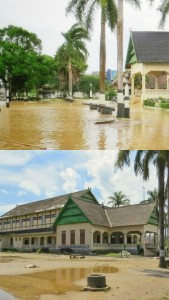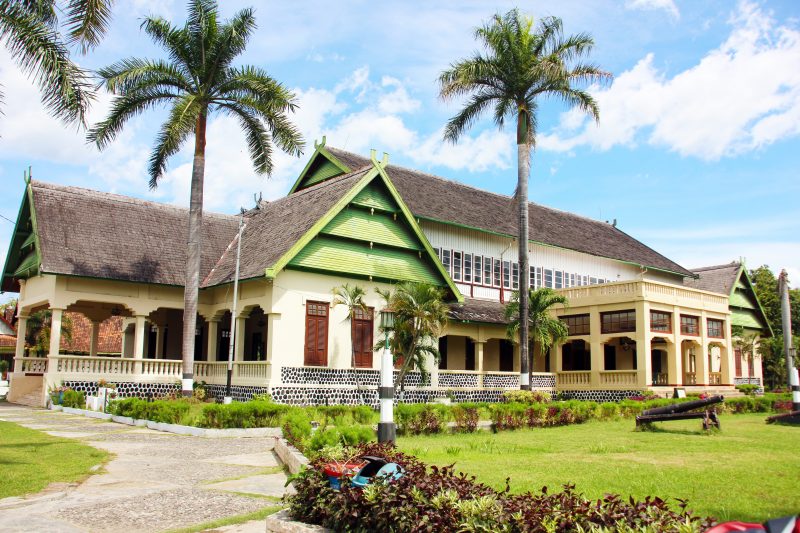After encountering generous and passionate locals in the historical royal city of Bima in October of 2016, Grace Susetyo was shocked to learn about the flash floods that paralyzed the area’s economy and displaced 100,000 survivors in late December. In early February, she caught up with locals in Bima on the current state of their post-flood revival.
My memories of Bima in eastern Sumbawa consisted of generous hospitality, delightful palaces and mosques brimming with historical epics, attending momentous folk festivities, and long road trips by beautiful coastlines in the company of spirited young locals dedicated to perpetuating creative cultural spaces and caring for the environment.
“That room you stayed in doesn’t exist anymore. It drowned under a two-metre flood of mud and garbage,” said local journalist Akhyar M Nur on December 23, 2016. In October, Akhyar took me in on short notice the night I arrived in Bima.
Akhyar’s family, including his elderly mother and young niece, was evacuated to the highlands until the last week of January. In early February, Akhyar said that repairs to his family home remain in progress, along with a total of 1,105 damaged houses in Bima. Sixty of these houses went completely missing as they floated away with currents. Potable water supply in the west part of Bima city remains difficult, parts of town still experience electricity blackouts, roads are damaged and five bridges are either inoperable or missing.
Important cultural heritage sites were not exempt from the December flood’s impact. The manicured gardens of the Asi Mbojo Museum – the old Royal Palace of the Bima Sultanate – were badly flooded and the gates collapsed. Fortunately, due to the palace’s elevation, none of the museum’s collection of royal heirlooms were touched by floodwaters.


Asi Mbojo houses an expensive collection of delicate gold and silver crown jewels, weaponry, vintage royal utensils, royal apparel and paintings. The Bima Sultanate traces its origins to 17th-century colonial ties under South Sulawesi’s Gowa-Tallo Sultanate, which brought Islam and a distinctive maritime civilization to Bima. At the height of its glory, the Bima Sultanate’s territorial claims ranged from the Komodos, Flores, Sumba, Solor and parts of Timor. Asi Mbojo still exhibits the room in which President Sukarno spent nights in 1933 and 1950. The people of Bima have mixed feelings about the first president due to his broken promise to grant the Sultanate of Bima special territorial status after the region voluntarily integrated its sovereignty into Indonesia in 1945.
Other cultural heritage sites affected by Bima’s floods in December include the new palace Asi Bou, the royal cemetery of Tolobali and the historical prayer house Langgar Melayu Kuno.
Khusnul “Imey” Hatimah of Bima Regency’s Office of Tourism said that damage was reported and surveyed on December 26 and 27, but only repairs for Asi Mbojo’s garden and gates have been budgeted for. Imey said she has complained to the government about the current lack of urgency in response to the flood’s impacts on Bima’s other cultural heritage sites. “And [the government] would reason, ‘It’s just mud.’ They don’t seem to get that mud does eat away at heritage sites and heirlooms,” said Imey, who holds a master’s degree in museology.
In early February, Imey added that one of the reasons for this lack of urgency is because repairing damaged infrastructure and public utilities remains a higher priority. Much of Bima’s resources are currently allocated to normalizing rivers and irrigation systems, mud and garbage cleanups, restoring roads, rebuilding missing bridges and repairing damaged residential areas. However, Imey said that the government has promised to dispatch repairs for cultural heritage sites once infrastructure repairs are out of the way.

Until early January, Asi Mbojo welcomed 150 evacuees to take refuge on its terraces as they waited for floodwaters at home to subside and safe conditions to start cleanups and repairs. Other cultural heritage sites that turned into evacuation sites included Masjid Sultan Salahuddin, which took in 500 evacuees, and Langgar Kuno Melayu in Kampung Melayu, which took in 50.
“The worst thing about being stuck in an evacuation camp is when you can’t leave to buy food in the middle of the night due to the strong currents flooding the streets,” said cultural activist Rojil “Rizal” Afrizal. Rizal said the City of Bima did not have a proper disaster response system, so able locals like himself had to initiate their own independent disaster response teams (posko swadaya), distributing food and medicine.
As Bima’s emergency status ended on January 19, so did the activities of most posko. Economic activities have currently resumed as normal. However, Bima continues to deal with heavy rains and smaller floods in different parts of town, which add to the challenge of repairing damaged infrastructure.
“Bima is still traumatized,” said Imey. “When we see a little rain, we start packing our things and preparing to evacuate for fear of another flood.”
On the bright side, the floods have had a way of uniting the people and government of Bima to help out one another.


Bima Regent Indah Dhamayanti Putri continues to spend her days meeting flood survivors to deliver aid and listen to their aspirations, braving rains and urgent pages in the middle of the night. Farmers in the highlands donated truckloads of vegetables to the aid of starving urbanites. Youth communities, healthcare professionals and educators coordinate their own time and resources to help those in need.
“I am proud to see the revival of human values demonstrated in the people of Bima’s aid to one another as fellow human beings overcoming this challenge together,” said Imey.
In the face of disaster, the people of Bima have not forgotten whom history has made them: a selfless, giving people united in a courageous vision to rebuild dignity out of humility. The physical sights of the beautiful Bima I came to know in October of 2016 may have changed, but not the spirit of the people that made me fall in love with the city.
While there is as yet no certainty on the fate of affected cultural sites, Bima appears to put its people first as it embarks on mending public infrastructures back to sustainability. Perhaps that spells hope to encounter a new, revived city in the future, but one still brimming with its ancient drive for resilience.
The Indonesian Red Crescent is currently still actively providing post-flood aid in Bima. Donations can be made to Bank Syariah Mandiri account number 7015.119.537 in the name of Bulan Sabit Merah Indonesia. For updates, follow www.facebook.com/IndonesianRedCrescent or Instagram @mabesbsmi.




